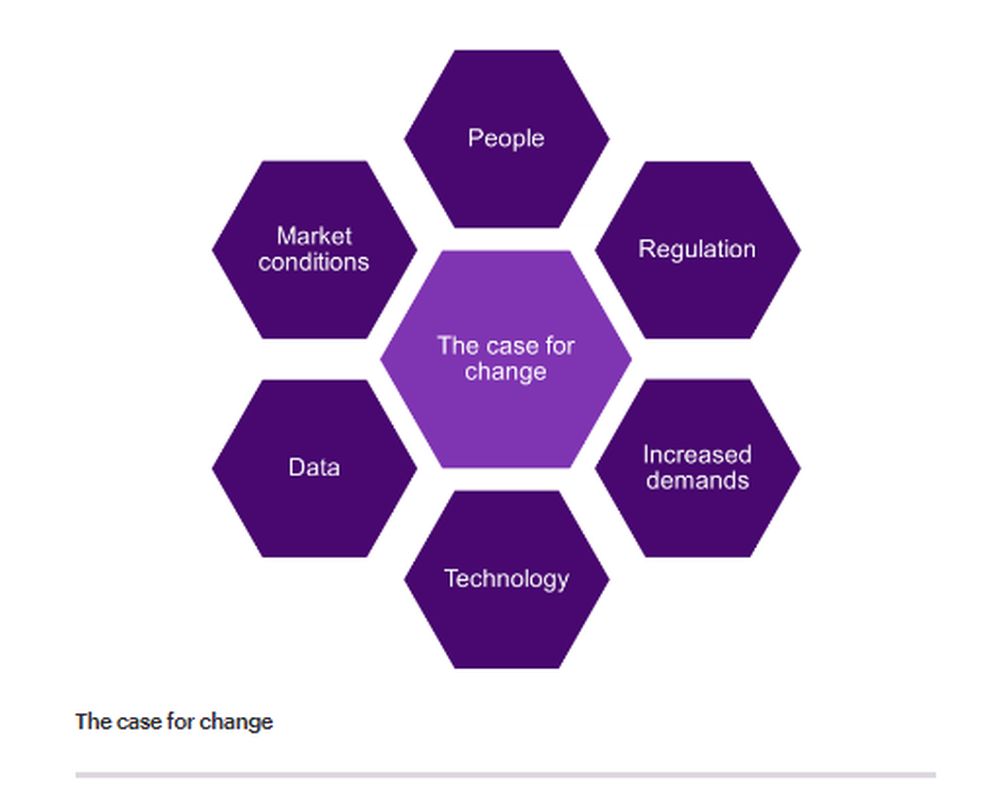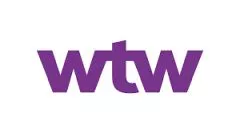- in Africa
This article outlines why there is a need for a fresh approach to reserving and how the value of the reserving function can be unlocked for wider business value.
A rebrand of reserving is long overdue. While it is typically seen as a 'safe pair of hands' providing assurance to the business, too often it is also seen as primarily backwards-looking, unresponsive and overly prudent, which can leave reserving somewhat siloed from other insurance business functions.
This lack of vision about the role of reserving often prevents the investment needed to remove these barriers and unlock the real value of reserving, instead restricting its role to a cog in a financial reporting wheel and curbing the full potential of highly skilled reserving teams.
This results in many reserving functions lacking the time, tools and dynamic processes to live monitor trends and changes in results, which means valuable reserving analysis is often out of date before it can be effectively used for strategic decision making; in effect, making the stereotype of reserving as backwards looking and unresponsive a self-fulfilling prophesy.
This article will show how it can be different!
The case for change

Against the backdrop of a softening market and other pressures on profitability, insurers are asking themselves what changes need to be made to simultaneously meet both their profit and growth targets. While the Board's reflex response may be to initially turn to underwriting and pricing, potentially along with expense control and improving claims processes, reserving is also worthy of attention.
A rebrand of reserving is long overdue
The pandemic forced a dramatic shift in working styles, shining a light on areas of inefficiency in the reserving process where companies may have 'muddled through' in their pre-pandemic working environment. The introduction of IFRS 17 was another challenging experience for many insurers, highlighting just how unwieldy parts of the process were, with teams manually re-building spreadsheets and struggling to embed the new requirements. Actuarial teams also continue to shoulder the burden of resource gaps and turnover, which highlight the key-person risk inherent in reserving processes that are not highly automated and well governed.
Fast-emerging technologies, along with the exploding volume of available data, give another reason to make changes now. Pricing teams have benefited over recent years from sustained investment in advanced analytics, data science and machine learning, resulting in a level of sophistication that would have been unrecognisable a few years ago – including the migration from Excel-based pricing to system-based cloud hosted third-party providers. In contrast, reserving teams have lacked investment and, as a result, have remained sidelined from strategic decision making, partly because they have been unable to effectively utilise granular data. It's time that the reserving function is given the opportunity to also power up its processes and deliver its full potential as a key source of analytics and insights of critical value to the business.
Insurers cannot afford for their highly skilled reserving teams to be held back by old processes and technology
The case for change is stronger than ever; insurers cannot afford for their highly skilled reserving teams to be held back by old processes and technology, and to merely produce aggregate, infrequent figures for the purpose of financial reporting.
Unlocking the full potential of reserving
Many companies have known for several years the importance of actuarial functions being joined up - sharing a clear and holistic view of risks within the business, as well as enabling effective feedback loops. Regulators have been highlighting the importance of this joined up thinking for some time.
In practice, friction remains in the interaction between reserving and pricing / underwriting teams, despite both functions sharing the same goal of improving profitability for the overall business. If this friction is to be alleviated or eliminated, the ability to communicate more effectively between the two teams by closing the gap between the more agile and granular pricing view and the cumbersome and aggregate reserving view is crucial.
Reserving teams have a unique capability to understand key performance drivers within any portfolio
Reserving teams have a unique capability to understand key performance drivers within any portfolio. Yet we continue to see many teams constrained from accessing and analysing more granular information because they do not have the time or tools to do so. Technological advances mean automation of reserving processes is now easily achievable and many in the market are starting to benefit from this. In addition, approaches like algorithmic and machine-led reserving enable rapid and robust predictions at a lower level of granularity to better support the decision-making process of the underwriters and pricing actuaries. WTW's ResQ Machine-led Reserving module is a logical step into advanced analytics since it leverages the traditional, aggregate reserving framework and seamlessly integrates machine learning with traditional reserving methods, maintaining interpretability while enhancing analytical capabilities.
Earlier identification of emerging trends and an understanding of the specific drivers allow reserving actuaries to make faster and more appropriate allowances in their estimates. For example, where there have been changes in the product or portfolio mix, claims handling or the economic or legal environment, existing information elsewhere in the company should inform and enhance the reserving team's analysis. While the primary objective of portfolio management is to support business performance optimisation through providing metrics and guidance to underwriters and portfolio owners, the same metrics should also be shared with reserving teams to support more sophisticated reserving predictions and accuracy.
There is also an opportunity for claims and reserving teams to innovate in a synergistic way, leveraging more combined value for the entire claims estimation process and financial management of insurers. Claims analytics is one of the fastest growing capabilities in insurers; claims teams are moving from existing descriptive methods of tracking and analysing towards building suites of predictive models, including through the use of Artificial Intelligence. Much of the information found in granular or unstructured data (such as when creating a claim record), can help with the estimation process. A range of data can be digitised, extracted and utilised with machine learning techniques to provide predictive power and deeper insights. This presents very exciting cross-over benefits for reserving, such as early large loss detection and greater confidence in case estimation.
While the role of reserving will continue to include providing assurance and meeting regulatory reporting requirements, it can and should also be recognised as a potential source of genuine business insight. We have worked on many powerful use cases with clients that prove the value in cross-function collaboration on data and solutions; it's the right time to be open to a shared vision of change and modernisation.
Reserving can and should be recognised as a potential source of genuine business insight

Transforming the reserving processes and systems will provide companies with
- Reserving results that are granular, timely and accessible when needed;
- Additional insight to challenge and/or enhance the analyses of other functions and support strategic decision making;
- An improved feedback loop between reserving and pricing / underwriting;
- Skilled, motivated staff who create value across the business.
Case study: Reserving transformed
WTW was appointed to help transform an insurer's reserving function to enable it to provide better support to the company's other business functions.
The problem
The reserving team was heavily reliant on Excel which left it lacking agility and responsiveness, resulting in a significant number of issues. For example, whenever another function requested analysis on a specific subset of the portfolio or at a specific granularity, this would take the reserving team time to set up, check and deliver. There was also a dependency on IT to make any changes in the data, further slowing down the reserving team's ability to respond to business requests and to be flexible to changing business needs. This meant they had to frequently decline requests or push back on deadlines, leading to the perception that the reserving team was slow and unhelpful.
Due to the excessive manual effort required to run the process, the team's view of reserves was restricted to a quarterly basis. As a result, the client's pricing team effectively ran their own reserving process to feed into pricing models. The MI produced by the reserving function was not widely used within the business, beyond regulatory reporting, as it was too aggregated and did not include a clear explanation of the drivers of the results.
The solution
Working collaboratively with the client, we designed and implemented a transformed reserving process which was flexible, automated and rich with analytics. Highlights of the new process:
- Aggregate analysis is highly automated, with human effort adding genuine value;
- Results are produced automatically at a policy level by cascading aggregate methodology and assumptions down to the policy level (a next step is to calibrate assumptions at the granular level, adjusting them to take into account policy level characteristics);
- There is an automated process to update dashboards, which enables the monitoring of emerging experience outside of quarterly reserving process;
- A data warehouse was introduced, which gives the control of data back to the actuarial team and means they can now query underlying data sources without impacting the source systems themselves.
As part of the transformation project, we significantly reduced the reliance on Excel and implemented a suite of new technology. We used ResQ, WTW's aggregate reserving software, and Unify, WTWs workflow management tool that provides control and governance across the process as well as full end-to-end automation capability. We also used Power BI for visualisations and embedded these within the Unify environment.
Key outcomes
The best outcome from this project is that the company's reserving function is now seen as one of the innovative, strategic and forward-thinking parts of the business.
The company's reserving function is now seen as one of the innovative, strategic and forward-thinking parts of the business
The reserving team is quicker at responding to ad-hoc queries from the business and works in an agile, flexible format to meet ever changing business needs.
The production of policy level results enables the reserving team to provide insight to the pricing and underwriting teams. The calibration of assumptions at this level will lead to even more reliable reserving results and can support better underwriting decisions by providing insight into the claims of experience on each policy.
The monitoring of experience outside the quarterly reserving process allows the reserving team to be more proactive about investigating and communicating deteriorations or deviations from expected experience.
The reserving team is now able to produce more diagnostics that help communicate changes in experience to the wider business, making it possible to provide validation of pricing assumptions and feed directly into pricing models.
Ultimately, this new solution gives the business greater confidence in, and improved transparency of, their results, enabling the reserving team to influence wider strategic decisions and have a real impact on business performance.
The content of this article is intended to provide a general guide to the subject matter. Specialist advice should be sought about your specific circumstances.



